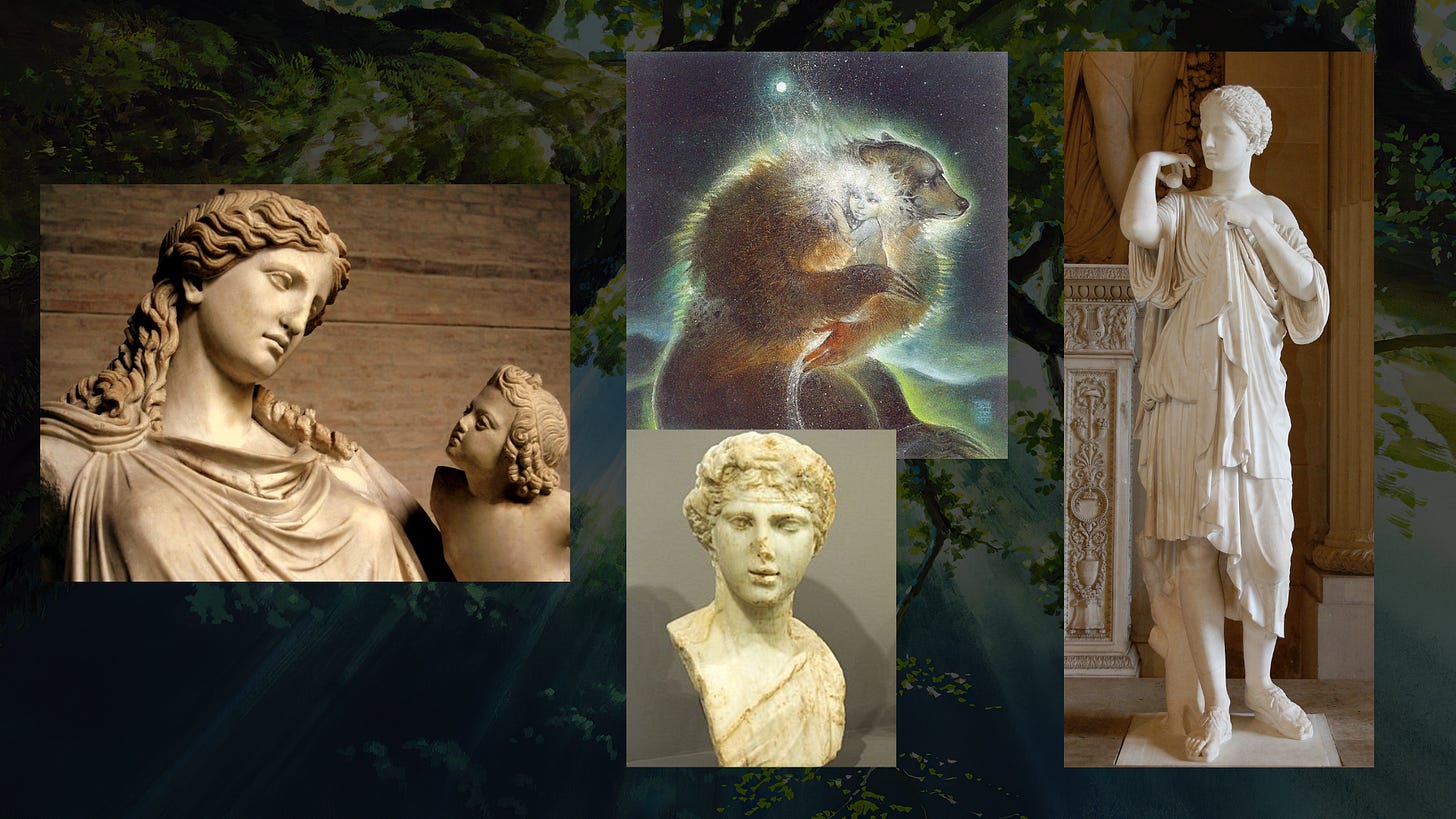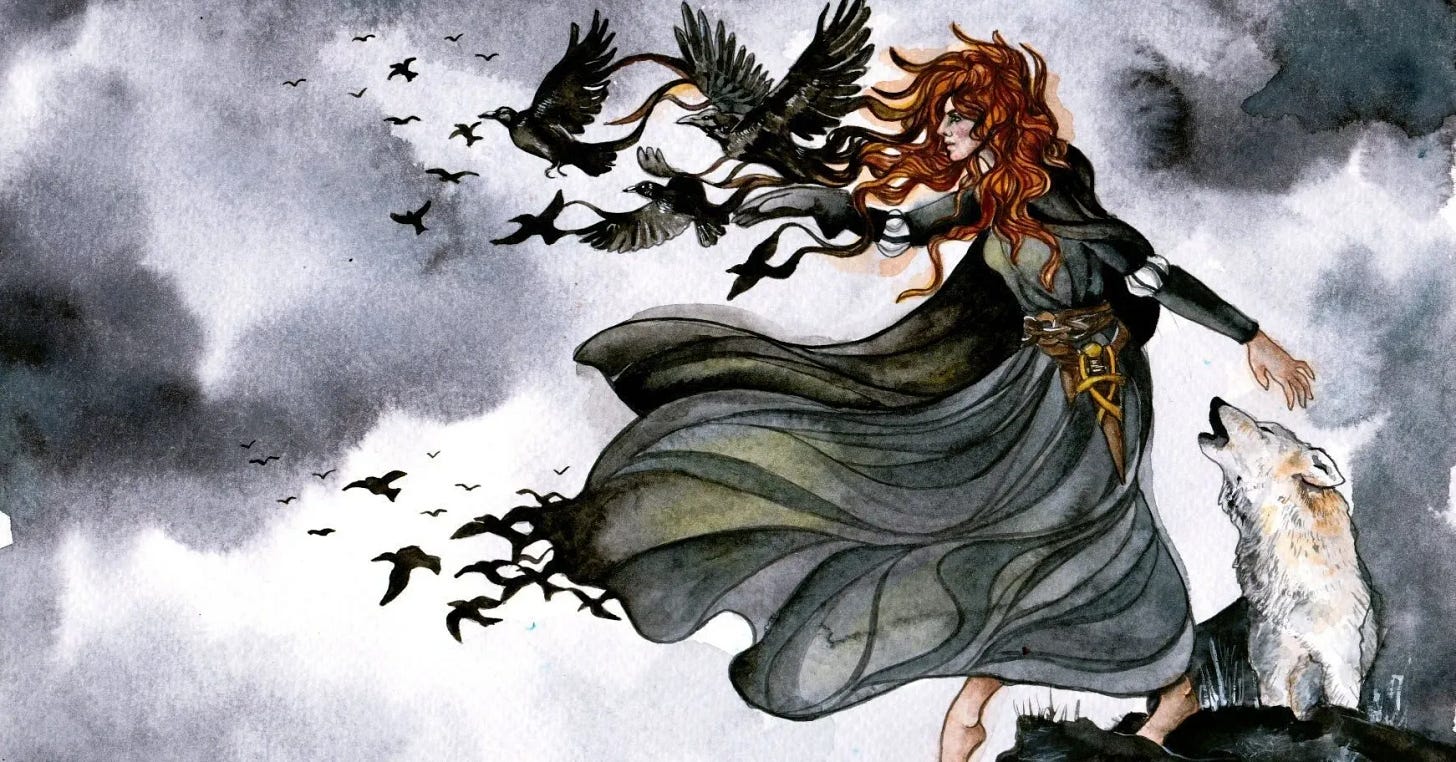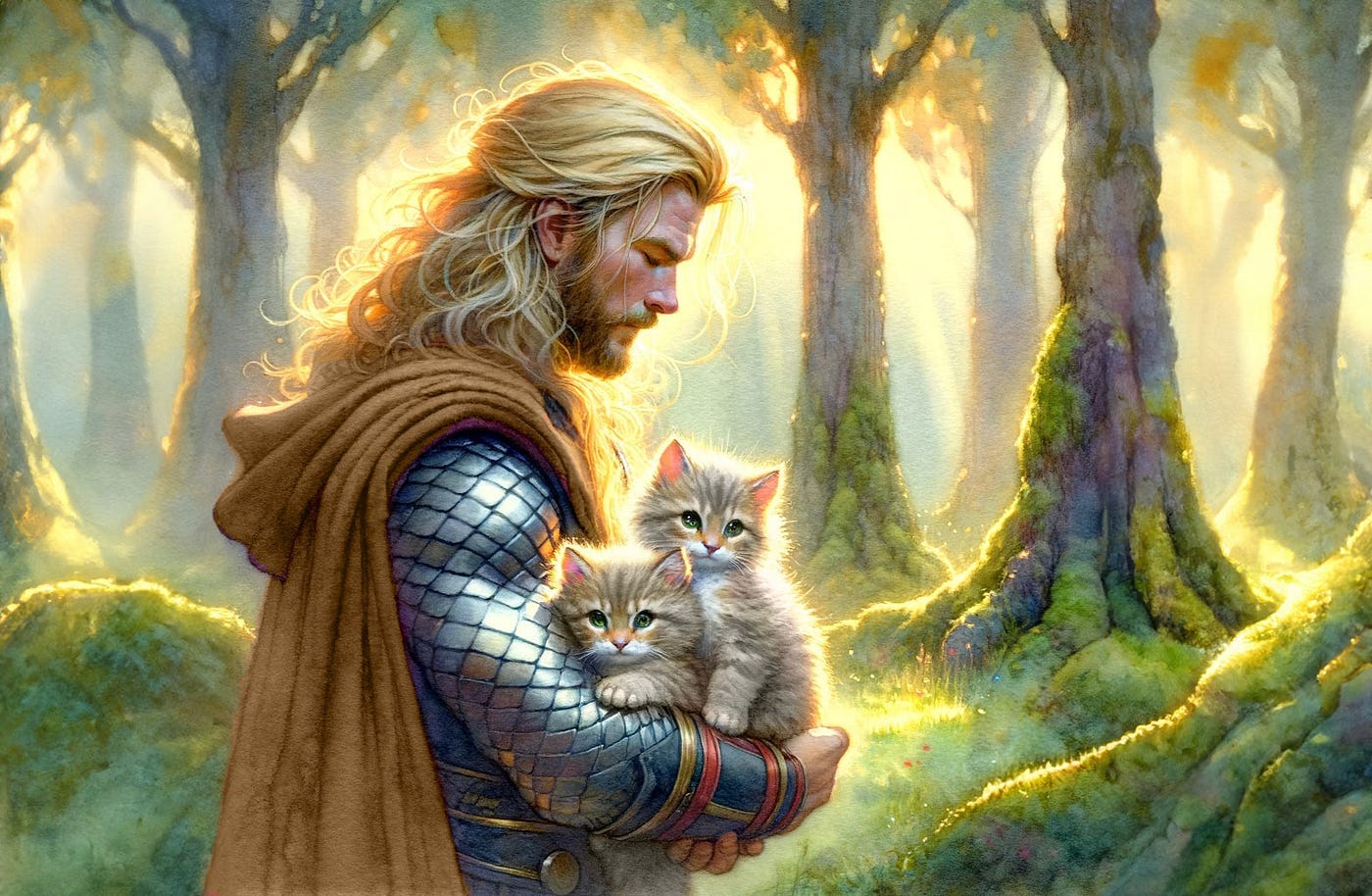Okay, so you know when you’re mad at someone for doing something and, deep down, you realize it’s something that you do too? That’s projection in a nutshell. You take your own feelings, flaws, or insecurities, and you basically just toss them onto someone else. Now, when we talk about shadow projection, it’s like taking the darker, more uncomfortable parts of ourselves, stuff we don’t like or don’t want to deal with, and projecting them onto other people, making them seem like they’re the problem.
But here’s the thing: these projections aren’t even about the other person; they’re about something within us that we’ve buried, often because it’s linked to past trauma. So instead of facing our own stuff, we point fingers and get caught in this cycle of misunderstanding ourselves and others. We project onto someone who does not even have those qualities in the bad way, and might just embody the healthy version, or we might actually spot the bad behaviour we secretly do ourselves, or just the quality it points to in a healthy version that we repress. Like how we might call someone being assertive (protecting their emotional boundaries), arrogant, or too “bossy”. Though sometimes someone might legit be. The key is discernment and vibe checks.
Distorted Qualities and Trauma Wounds
Okay, so now let's dive a little deeper. What happens when these projections go into overdrive? You end up acting out qualities that are way off from the healthy version of that quality. These distorted qualities don’t just come out of nowhere, they actually hide between the cracks of unresolved trauma. The wound might be something you haven't fully processed, and the distorted behavior is the "reaction" you learned to cope with it. So you might lash out against the other person you project onto, or in another way behave in ways that later might have you question. Why?
So now then, let’s talk about trauma triggers. When something happens in the present that reminds you of an old wound (say a past rejection, a broken promise, or feeling invisible), you might suddenly react in a way that feels way bigger than the actual situation. Your brain and body are like, “Wait, this feels dangerously similar to that old hurt,” and your emotional response takes over. This is when we both triggers and also projections come to life: maybe you snap at someone for something small, but it’s actually about feeling abandoned or not good enough from the past. Or you see someone get the attention you secretly desire, and you see them as egotistical.
Or even someone being emotional and in need of reassurance and seeing them as way too needy. Whilst the person actually might just be genuinely scared. Yet actually this is pointing too much deeper needs, that are within you unexpressed, and thus not yet healthily integrated. So you fear them in others, or maybe think that they can only be expressed in “bad” ways.
Think a father who had anger explosions, when you were a child, and now anger in any way is “bad” and something you avoid. Which you can’t stand in others, whilst you actually might now have zero emotional boundaries. So the reason you hated that confident person is because they reminded you of who you were not allowed to be as a kid. All of these point to your own trauma wounds.
Trauma Wounds to Look Out For
Anxiety Over Nothing (But Actually Everything)
Ever feel like your anxiety is just hanging there, making you suddenly freak out about everything, even when there’s nothing concrete to worry about? It’s like the anxiety isn’t attached to any one thing but just feels... overwhelming. The thing is, that anxiety is probably a symptom of an old trauma wound that hasn’t been processed. It’s like your body is on high alert because it’s been hurt before, and now it’s just waiting for something to go wrong. The distorted version? Overreacting to every little thing, thinking the world is out to get you.
Childhood Example: Imagine growing up in a household where there’s constant unpredictability. Maybe your parents would often argue, or there was never a sense of stability. As a child, you never knew when something might "go wrong," like when a parent would suddenly get upset or when you’d be criticized for something minor. You learned to stay on high alert, watching for signs of tension even when nothing was obviously wrong.
The healthy version? Learning how to ground yourself in the present moment and not let past hurts dictate how you react to today’s challenges. It is ok to feel nervous or even anxious. It is all about holding space for your inner child to relearn safety.
Hyper-Independence as a Trauma Response
Here’s a vibe you might know: someone who’s all about never needing help, like, not even for the smallest thing. At first, it seems like good confidence, right? But hyper-independence is often a trauma response. It's like, “If I rely on anyone, they’ll let me down.” It’s this armor that keeps people at arm's length, because past experiences (maybe betrayal or abandonment) have created a fear of dependence.
Childhood Example: Let’s say you grew up in a household where emotional support was inconsistent. Maybe your parents weren’t emotionally available, or they were too busy to help when you needed them. As a child, you learned that if you wanted something done or to feel seen, you had to do it yourself. You might have even been told, “You’re old enough to handle this,” or “You don’t need anyone to help you.” As a result, you started to believe that depending on others was risky, and doing everything on your own was safer.
The healthy version? It’s about balance. Being able to ask for help when you need it and trusting others without losing yourself in the process. It is about re-learning that vulnerability is safe, that someone can hold space for your inner child, and not leave.
Emotional Numbness or Dissociation
Ever feel like you’re just... disconnected from your emotions? Like, you can’t really feel anything deeply, or maybe you even feel like you're floating outside your body when things get tough? Emotional numbness can be a survival tactic, sometimes even going into the territory of depression, especially for someone who has been through a form of overwhelming trauma. It's like your brain’s way of protecting you from feeling too much too fast.
Childhood Example: Maybe as a child, you were constantly told to “stop crying” or that your emotions were “too much” to handle. When you were upset, you might have been dismissed or even punished for expressing emotions. Over time, you learned to shut down your feelings so you wouldn’t face rejection or invalidation. When life became overwhelming, you started to "check out" emotionally because it was safer than feeling anything too deeply.
The healthy version? Feeling emotions deeply, but knowing how to process them safely without letting them consume you. It is about learning to hold space for the emotions your inner child feels. To let yourself cry, and feel. Knowing that this is not weakness, but actually strength. To teach yourself that it is safe to feel now.
People-Pleasing and Identity Drift
When you’re constantly trying to make everyone around you happy, but you lose track of who you even are in the process... that’s people-pleasing. Often, it’s tied to trauma wounds of not feeling worthy unless you're making someone else happy or trying to earn love. This projection can look like bending yourself out of shape just to fit in or avoid conflict. It’s exhausting, and it can make you forget who you really are.
Childhood Example: Think about growing up in a family where the approval of your parents was always conditional on how well you performed or how much you gave. If you did something that pleased them, you felt loved and seen, but if you in anyway disappointed them, you were made to feel invisible or unworthy. As a result, you started molding yourself to what others wanted, putting their needs before yours in order to gain approval, but you ended up losing touch yourself.
The healthy version? Knowing when to say no, setting boundaries, and being true to your needs without sacrificing your identity for approval. It is about knowing when to tend to your own needs. To listen to your body and feelings.
Fear of Being Seen (and Not Being Seen)
Have you ever felt like you’re stuck between wanting to be noticed and the fear of being seen for who you really are? It’s like wanting validation, but also hiding from it because you’re terrified someone might judge or reject you. This fear comes from past experiences of being overlooked, dismissed, or hurt when you were vulnerable. So you have learned it is safest to hide in plain sight, avoiding attention because you fear being judged or being misunderstood. So it might feel safer to ghost people.
Childhood Example: Maybe you were the quiet kid who felt invisible in your family or social circles. Maybe your emotional needs were overlooked, or you felt like you were “too much” or “too little” to be noticed. Perhaps there was a lack of emotional attunement from your caregivers, so you grew up thinking that to be seen for who you truly are meant facing rejection or criticism. As a result, you developed this push-pull dynamic where you wanted to be noticed, but you also feared it because of the potential for judgment or being misunderstood.
The healthy version? Embracing who you truly are without seeking external validation for your worth. It’s about being seen, not because you need it to validate yourself, but because you’re comfortable with yourself, regardless of what others think. It is about learning to validate your own emotions, your own inner truth.
Archetypal Truths and Instinctual Needs
So, behind all these trauma responses are deeper, more authentic needs that never got met in the way they should have been. There is a true instinctual need behind that, which corresponds to an archetype that became repressed. Thus turning into a negative force (the psychological complex), which causes the trauma triggers. As it now associates this emotional need with danger, and something to repress, or leads to the unhealthy version of the behaviour you used as coping mechanism, to as a child somehow fill that need. That right there is not your fault. It was your way to survive in a place that could not hold the needs you had as a child. You just did what you had to do, to survive. Which is an automatic defence mechanism. Yet now it is up to you to relearn what those actual needs are. That hide below. What your inner child actually needed. You aren’t broken, you were just trying to protect your inner child.
Anxiety Over Nothing (But Actually Everything)
True Instinctual Need: The core need here is Safety and Grounding. As humans, we need a sense of security and stability in our environment to actually feel safe enough to express ourselves and trust that we can handle life’s challenges. This instinctual need allows us to be present and grounded, knowing we have a solid foundation that can weather the storms of life.
Archetype Missing in Childhood Experience: The Guardian Archetype (e.g., The Caregiver or Protector, think Artemis) represents this need for safety. This archetype ensures that we feel secure, both emotionally and physically. If the guardian figure is absent or inconsistent during childhood (e.g., if parents or caregivers are erratic, neglectful, or emotionally unavailable), the child grows up feeling like the world is unpredictable and dangerous, leading to hypervigilance and anxiety.
So we have to reconnect with the inner parent. We do this not through projection onto others, but by allowing ourselves to grief the unmet needs that we had to bury. To hold our inner child, and give them the love and grounding they needed. Whilst trying to re-learn safety with safe people within your life.
Hyper-Independence as a Trauma Response
True Instinctual Need: The need for Interdependence and Connection. As social creatures, we have a natural instinct to connect with others and seek support when we need it. This need is about finding a healthy balance between independence and the ability to lean on others for support, especially when facing challenges or difficulties.
Archetype Missing in Childhood Experience: The Lover Archetype (think here also Aphrodite) embodies the ability to connect deeply with others and trust in mutual vulnerability. This archetype promotes emotional closeness and helps the individual embrace the beauty of being both independent and dependent in healthy ways. If this archetype was stunted in childhood due to emotional neglect or abandonment, the person may struggle with over-relying on themselves and not trusting others enough to open up. Which is a repression of the need for vulnerability, and also childhood dependence, which as a child was totally healthy.
This is about learning to sit with your own feelings and vulnerability. To slowly relearn intimacy, by becoming intimate with your own emotions and body. As only if we learn to hold space for our own emotions, can we slowly learn to be also vulnerable with other people, and build actual connection. We can do this step by step. Finding slowly people we trust enough to open up to. That don’t leave, and can meet us in our more emotional states. That crying won’t lead to abandonment or dismissal.
Emotional Numbness or Dissociation
True Instinctual Need: The need for Emotional Expression and Integration. Every human has an innate desire to feel their emotions deeply and to express them in a healthy, safe way. This instinct ensures that we process and release our feelings, allowing us to learn from them and continue growing.
Archetype Missing in Childhood Experience: The Sovereign Archetype (Think the Sovereignty Goddess) represents the ability to master one’s emotions and integrate them into the psyche. A healthy sovereign knows when to feel deeply and when to step back, without getting overwhelmed. If the emotional sovereign archetype is thus not nurtured in childhood, such as when emotions are suppressed or dismissed, the child learns to disconnect from their feelings as a survival mechanism, leading to numbness or dissociation in adulthood. Which often goes hand in hand with some form of hyper-Independence as a Trauma Response.
People-Pleasing and Identity Drift
True Instinctual Need: The need for Self-Authenticity and Boundaries. We have a natural instinct to develop a strong sense of self and the ability to assert our needs and boundaries. This allows us to know and honor our desires and values, without compromising them for the sake of others.

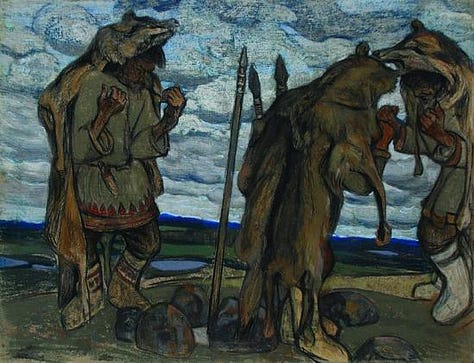
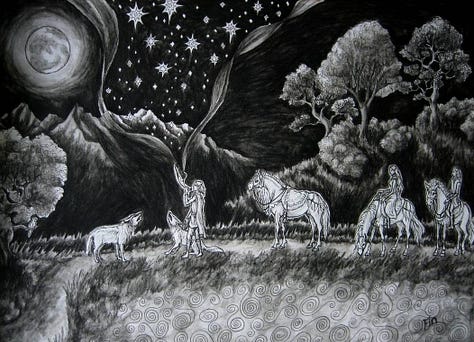
Archetype Missing in Childhood Experience: The Warrior Archetype (think here also Wolf-Apollo) embodies the courage to assert one’s own identity and to stand firm in the face of opposition. It is the warrior’s job to defend and protect the self, ensuring that the person does not lose themselves in the process of pleasing others. If the warrior archetype is not developed in childhood, perhaps due to a lack of supportive, empowering role models or a history of emotional manipulation, the person becomes prone to people-pleasing and identity drift.
This often leads to a lot of repressed anger, due to a repression of the assertiveness trait, leading to a build up of anger, that can easily erupt as rage. There is here a need to find healthy ways to express this anger. Think boxing, martial arts, or my own fav, going into the woods to scream your lungs out, chanting to Krigsgaldr by Heilung.
Fear of Being Seen (and Not Being Seen)
True Instinctual Need: The need for Validation and Visibility. Human beings are all hardwired to seek acknowledgment and being seen by others, not out of vanity, but as a way to feel understood and seen for who we truly are. This need ensures that we can shine authentically, without fear of judgment, and that our unique self-expression is appreciated.
Archetype Missing in Childhood Experience: The Hero/Heroine Archetype (e.g., The Leader or The Visionary) represents the ability to be seen and valued for who we are, without the fear of rejection or judgment. This archetype thrives in the places where healthy visibility is encouraged and celebrated. If the hero/heroine archetype is absent, perhaps due to neglect, criticism, or emotional invisibility in childhood, the person may develop a fear of being seen or fear of being misunderstood. This causes them to hide their true self to avoid rejection.
This sometimes can lead to unhealthy behaviours that are a compensation for this lack of being truly seen within childhood. The way out of this, is to validate yourself in ways that bring you comfort. Think here your favourite comfort characters, creating that OC or Fursona you always wanted. To carve out your own space to be who you are, which takes time and patience. As being seen for who you are also requires vulnerability, and enough trust with people around you, to hold space for who you are in the moment. Not because of what you do, but because of the fact that you exist.
Owning Your Shadow
Shadow projection isn’t something to be ashamed of, it’s just a way our subconscious tries to deal with pain we haven’t fully processed. But once we start to recognize these projections and uncover the deeper wounds behind them, we can heal, and integrate these parts of ourselves, and show up in a more authentic way. It is thus when we stop projecting our pain onto others and start dealing with it internally, that we unlock the power of our true archetypal selves, living out our needs in healthy and balanced ways.
In that way, if you catch yourself projecting. Don’t be hard on yourself. See them as learning moments. Times you can reflect back, and go. Where did this come from? What inner child need is truly behind it. Then try to nurture that need, and hold that inner child of yours with gentleness.
🧬 Soulware Update v3.1.4 – “Projection Protocols & Shadow Sync” Patch Notes
🔄 Shadow Projection Recalibration (SPRC v2.0)
Updated your internal mirror system to recognize when you're low-key judging someone for a trait you actually have but can’t admit yet.
Now includes:
✨ Automatic flagging of “ugh, they’re so arrogant” thoughts when you’re really just scared to own your power.
✨ Enhanced awareness mode: now asks, “Wait, is this about them… or is this about me?”
💥 Trauma Trigger Response Balancer
You’ll now be gently notified when you’re about to emotionally overreact to a 2/10 situation with a 10/10 emotional flashback. Replaces “Why am I like this??” with “What part of me didn’t get what it needed back then?”
Triggers are now treated as sacred emails from your inner child 🧸📩.
Currently supported Instinctual Needs:
🛡️ Safety → Guardian Archetype (Artemis-style: calm, fierce, grounded).
🤝 Connection → Lover Archetype (think Aphrodite but with boundaries).
🧠 Self-Knowledge → Sage Archetype (yes, inner wisdom unlocked).
🌟 Self-Worth → Sovereign Archetype (Crown yourself. No permission needed.)
🔮 Known Issues
Some users may experience ego withdrawals during inner child integration. This is normal and temporary. Please hydrate and seek softness.
If you begin crying during meditative flashbacks, you're doing it right.
Not all archetypes will return immediately. Trust the pace. Healing is a spiral, not a speedrun.









